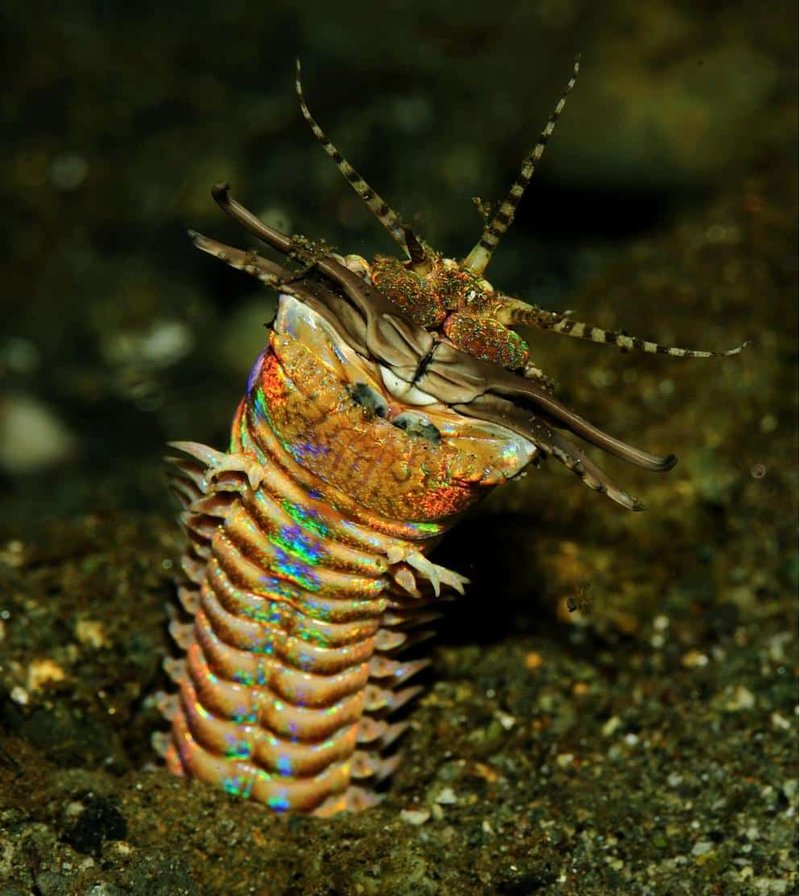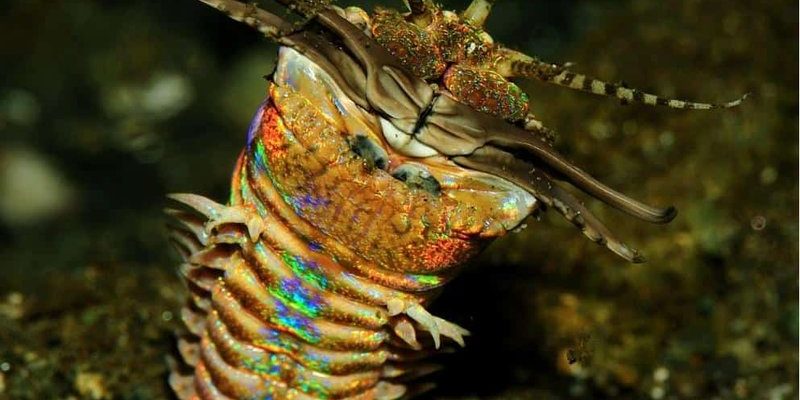
Imagine you’re watching a snake shed its skin—this process is a fresh start, an upgrade. In the same way, bobbit worms undergo molting to grow, shed old skin, and emerge anew. It’s a natural part of their life cycle, but the intricacies of this process can be quite complex. Let’s dive in and take a closer look at how bobbit worms operate, particularly focusing on their molting habits and growth stages.
What is a Bobbit Worm?
Bobbit worms, known scientifically as *Eunice aphroditois*, are predatory marine worms found in warm, shallow waters, primarily in the Indo-Pacific region. They can grow over three feet long! With their vibrant green or reddish hues, these worms are more than just stunning aquatic beauties—they’re intelligent hunters. Bobbit worms use their long bodies to hide in the ocean floor, sticking out only their segmented heads to catch unsuspecting fish and crustaceans.
These creatures are often mistaken for a piece of driftwood or coral, allowing them to ambush prey with surprising speed. Their hunting technique is almost like a scene from a predator movie—you think nothing’s happening, and then, bam! Dinner is served. So, understanding their growth patterns, particularly how they molt, is essential to appreciate these captivating marine animals fully.
Understanding Molting in Bobbit Worms
Molting, or ecdysis, is the process by which various animals shed their outer layers to grow. For bobbit worms, molting is crucial for several reasons. Firstly, their exoskeletons—made up of tough, chitinous material—don’t stretch like our skin. So, when they grow, they must shed this outer layer to allow for their expanding bodies.
The molting process can be quite labor-intensive. Once a bobbit worm senses it’s time to molt, it secretes enzymes to help detach the old skin. Afterward, it pulls itself out slowly, leaving behind the remnants of its previous layer. It’s a bit like finding an old shirt that no longer fits and taking it off—you can’t just let it hang around. Once this process is complete, the worm emerges with a shiny, new coat, ready to tackle the underwater world again.
The Growth Stages of Bobbit Worms
Bobbit worms typically go through several growth stages, starting from a planktonic larval stage. Here’s the breakdown:
- Larval Stage: The journey begins when the larvae hatch and drift in the ocean currents. They can float around for weeks, feeding on tiny plankton.
- Juvenile Stage: Once they settle on the ocean floor, they undergo metamorphosis. They develop into juvenile worms, starting to take on their characteristic form.
- Adult Stage: After multiple molts, bobbit worms become adults and develop their full size. This stage can last for several years.
The transformation from larvae to adults is truly remarkable. Each stage requires careful navigation through their environment and resources. Juvenile bobbit worms often face competition for food and territory, and their growth can be influenced by various factors like water temperature and food availability.
How Often Do Bobbit Worms Molt?
Molting frequency can vary widely in bobbit worms, depending on several factors, including age, size, and environmental conditions. In general, younger bobbit worms tend to molt more frequently—sometimes every few weeks. As they mature, this frequency often decreases; adults may only molt a couple of times a year.
Here’s the thing: if you’ve got bobbit worms in your aquarium, you might notice molting happening more often when conditions are optimal—like when the water is warm, and there’s plenty of food. Poor conditions can lead to stress and inhibit the molting process, which can impact their growth and overall health.
Signs of Molting in Bobbit Worms
You might be curious about how to spot a bobbit worm that’s about to molt. There are a few telltale signs to look out for.
First, you might notice the worm becoming less active, settling into its burrow. This behavior indicates it’s preparing for the big event. Next, you may see its body getting slightly broader or its color changing a bit, hinting at the need for a new exoskeleton.
Once it starts molting, you might catch glimpses of the old skin being shed. You can find it just lying around in the substrate—sort of like discarded wrapping paper after a birthday party. This process can take several hours or even days, depending on the individual worm’s size and health.
The Importance of a Healthy Environment for Molting
Creating a suitable environment for bobbit worms is crucial for their molting and overall growth. They thrive in clean, stable waters with ample food sources. Factors like water temperature, salinity, and oxygen levels need to be monitored closely.
If their environment is off-balance, bobbit worms may struggle during the molting process. Stress from harsh conditions can lead to incomplete molting, which may cause deformities or health problems. So, if you’re keeping these worms in an aquarium, maintaining that balance is absolutely key.
Also, a varied diet plays a significant role. Bobbit worms are carnivorous and enjoy a diet rich in meaty foods. When they get the right nutrients, they’re more likely to thrive and undergo healthy molting processes.
Understanding bobbit worm molting and growth patterns is a fascinating glimpse into the lives of these unique marine creatures. From their early days as drifting larvae to their transformation into formidable predators, the molting process is a crucial part of their development. Each stage of life presents challenges and changes that can be influenced by the environment and care they receive.
Whether you’re an aquarium enthusiast or just diving into the world of marine biology, appreciating the intricacies of bobbit worms can deepen your understanding of nature’s wonders. So, next time you see a bobbit worm, remember the incredible journey it has undergone—complete with molts and all.

